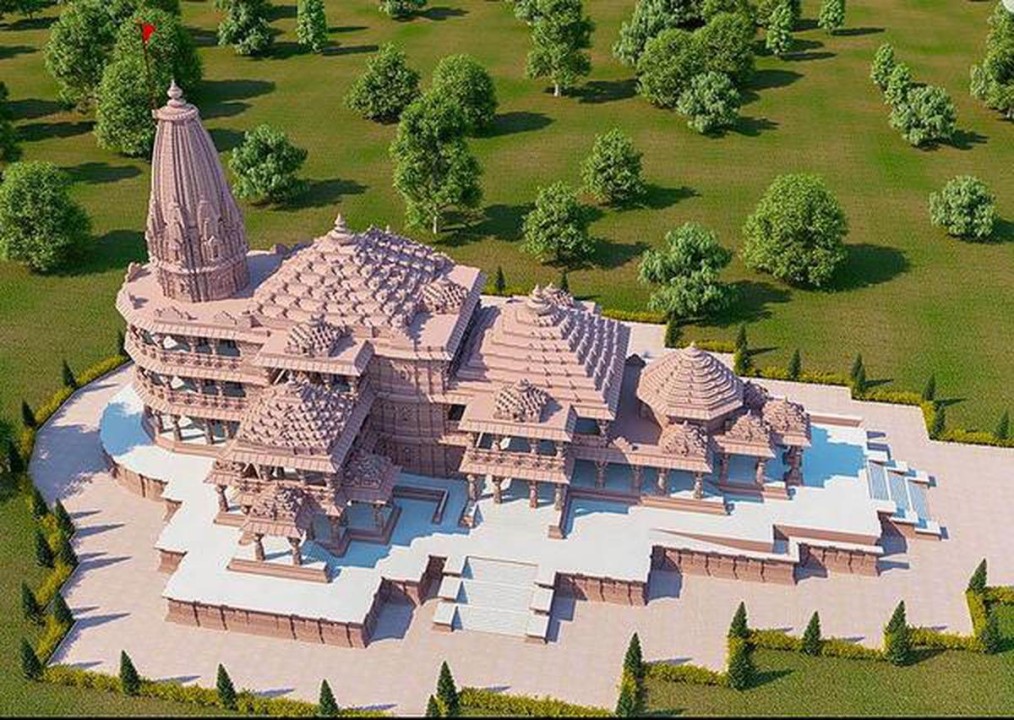In the sacred city of Ayodhya, where every stone breathes the tales of Lord Ram’s divine saga, a monumental edifice is emerging—the Ram Mandir. This architectural marvel, enshrining the ideals of dharma and devotion, stands as a testament to centuries of faith and the undying spirit of a nation. In the heart of this grandeur lies the essence of Pran Pratishtha, a ritual that breathes life into the divine abode of Lord Ram.
1. Genesis of the Ram Mandir:
The journey of the Ram Mandir in Ayodhya is a saga of resilience, faith, and unwavering devotion. The construction of the temple follows a historic legal battle that concluded with the Supreme Court’s landmark judgment in 2019, paving the way for the realization of the collective dream of millions.
2. Ayodhya: The Spiritual Epicenter:
Ayodhya, the birthplace of Lord Ram, resonates with spiritual energy. The city, mentioned in ancient scriptures and revered by millions, is witnessing the resurrection of a temple that embodies the cultural and religious identity of India.
3. Pran Pratishtha: Breath of Divinity:
Pran Pratishtha, the consecration ceremony, is the soul-stirring process of infusing life into the murtis (idols) of deities. For the Ram Mandir, this ritual is not merely a tradition; it is the sacred heartbeat that connects the earthly realm with the divine.
4. Architectural Splendor:
The Ram Mandir is a harmonious blend of architectural brilliance and spiritual symbolism. The temple’s design, inspired by the Nagara style of temple architecture, resonates with intricate carvings, majestic shikhara, and grandeur that befits the stature of Lord Ram.
5. Spiritual Significance:
Beyond its architectural magnificence, the Ram Mandir holds profound spiritual significance. It is believed that the temple will not only be a physical abode for Lord Ram but also a reservoir of divine energy that radiates peace, harmony, and righteousness.
6. Historical Context:
The Ram Mandir stands at a site with layers of history. It is believed to be the spot where the original temple, said to be built by Lord Ram’s devotee King Vikramaditya, once stood. The journey from the 16th century Babri Masjid to the 21st century Ram Mandir is a saga etched in the collective memory of the nation.
7. Ayodhya Beyond Boundaries:
The significance of the Ram Mandir transcends geographical boundaries. It is a pilgrimage site that beckons devotees from across the globe, reinforcing India’s rich cultural tapestry and the universal appeal of Lord Ram’s teachings.
8. The Road Ahead:
As the construction of the Ram Mandir progresses, it represents a collective vision for a harmonious future. The temple is not just an architectural marvel; it is a symbol of unity, a source of inspiration, and a reminder of the cultural ethos that binds a diverse nation.
Conclusion:
In the sacred soil of Ayodhya, where every particle resonates with divine history, the Ram Mandir stands poised to become a beacon of spirituality, cultural identity, and national unity. The Pran Pratishtha is not just a ritual; it is a profound invocation, breathing life into the sanctum where the ideals of Lord Ram will echo for eternity.
As the Ram Mandir emerges in Ayodhya, it is not just a physical structure; it is a testament to the indomitable spirit of a culture that finds its roots in devotion and righteousness—a saga that continues to unfold with each brick laid and every prayer uttered.
